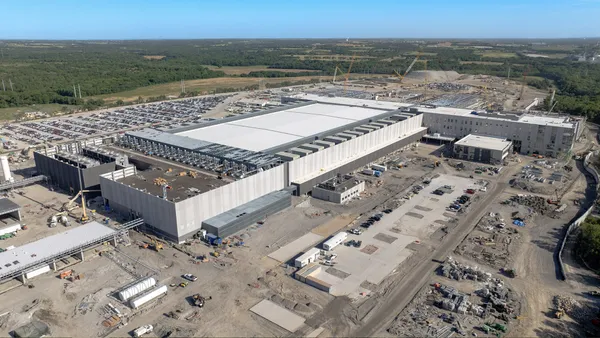Dive Brief:
-
Medical real estate firm Revista reported approximately $97 million worth of new hospital, off-campus clinic and medical office building is underway. According to Revista, 1,340 projects were started in the past year or are currently in the planning stages.
- The leading states for healthcare real estate are California — with $11.8 billion in projects underway — and Texas — with $7.7 billion in projects underway.
-
The five largest hospital projects underway this year are:
-
Tisch Hospital expansion in New York; $2 billion
-
New hospital tower at the Hospital of the University of Pennsylvania in Philadelphia; $1.5 billion
-
Loma Linda University Medical Center replacement in California; $1.2 billion
-
(Tie) Lucile Packard Children's Hospital at Stanford expansion in Palo Alto, CA; $1.1 billion
-
(Tie) Veterans' Affairs Fitzsimons campus replacement in Aurora, CO; $1.1 billion (despite reports the actual cost is closer to $1.7 billion)
Dive Insight:
Revista Principal Hilda Flower Martin told Healthcare Finance News she attributed the recent uptick in healthcare construction to greater demand for off-campus buildings, a larger number of insured people, and the growing elderly population.
"Look across what hospitals are building as far as ambulatory space, there's a movement to go out into the community and away from the campus," she said.
Revista calculated the additional number of people — 15.3 million — who now have health insurance since the implementation of the Affordable Care Act and translated that number into square feet of medical space.
The firm found that in 2013, there was 4.8 square feet of medical office space for every insured person. Today, that number has dwindled to 4.58 square feet for every insured person. "An additional 62 million square feet would be needed to fill the gap," Healthcare Finance reported.
Revista's findings come after Dodge Data & Analytics' recent 2016 Construction Outlook report, which found healthcare construction remained flat this year and predicted a slight 1% rise in 2016. Dodge said the industry has been hesitant to make significant capital investments into major construction projects due partly to the "uncertainty that continues to plague the healthcare market" after the passage of the Affordable Care Act.
However, Dodge — similar to Revista — predicted the industry will soon move past that environment of uncertainty and face the need to serve an expanding elderly population and replace older facilities. Once the industry reaches that point, "healthcare construction is likely to see stronger increases given the speed with which changes are happening in both the population and the healthcare industry itself," Dodge noted.












